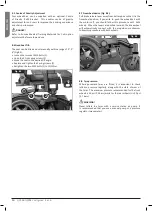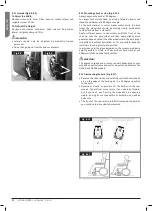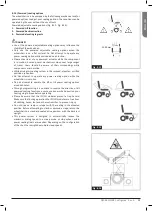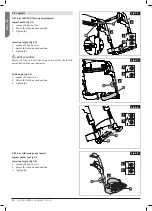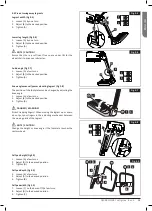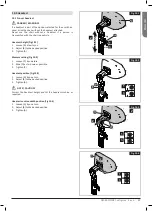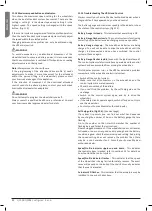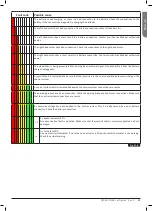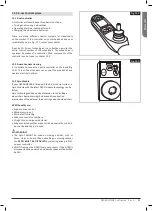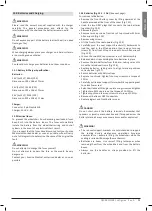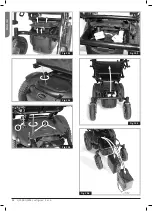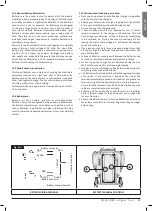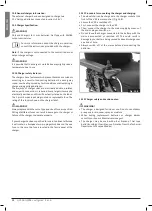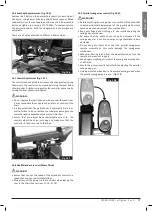
EN
GLISH
42
Q100R-Q200R Configured Rev. A
11.14 Maximum speed button and indicator:
This shows the maximum speed setting for the wheelchair
when the dual attendant system has control. There are five
settings - setting 1 is the slowest speed and setting 5 is the
highest speed. The speed setting is changed with the speed
button, (Fig.11.5).
If the control system is programmed for drive profile operation,
then the dual attendant system speed adjuster will only adjust
the speed within the selected profile.
Changing between drive profiles can only be achieved using
the VR2 main joystick.
WARNING!
To avoid unexpected or unintentional movement of the
wheelchair and to conserve battery power, it is recommended
that the control system is switched Off when drive or seating
adjustments are not being used.
Note:
Always move the chair with care.
If the programming of the attendant drive profile (s) needs
adjustments to make it more convenient for the attendant
and/or the person sitting in the wheelchair, please contact
your Sunrise Service agent for adaptation.
If the direction of movement of the directional attendant
control needs to be altered, please contact your authorised
Sunrise Medical dealer for adaptation.
WARNING!
Do not attempt to program the wheelchair yourself.
Always consult a qualified health care professional. Contact
your Sunrise medical approved dealer for details.
11.15 Troubleshooting The VR2 Hand Control:
Always consult your Sunrise Medical authorised dealer when a
diagnostic fault has appeared on your hand control.
The battery gauge and maximum speed/profile indicator show
the status of the control system, (Fig.11.1).
Battery Gauge is steady
- This indicates that everything is OK.
Battery Gauge flashes slowly
- The control system is functioning
correctly but the batteries need charging as soon as possible.
Battery Gauge steps up
- The wheelchair batteries are being
charged. You will not be able to drive the wheelchair until the
charger is disconnected and you have switched the control
system off and on again.
Battery Gauge flashes rapidly
(even with the joystick released)
The control system safety circuits have operated and the control
system has been prevented from moving the wheelchair.
This indicates a system trip. i.e. the VR2 has detected a problem
somewhere in the wheelchairs electrical system.
• Switch off the control system.
• Make sure that all connectors on the wheelchair and the
control system are mated securely.
• Check the condition of the battery.
• If you can’t find the problem, try the self help guide on the
next page.
• Switch on the control system again and try to drive the
wheelchair.
• If the safety circuits operate again, switch off and do not try to
use the wheelchair.
• Contact your Sunrise Medical authorised dealer.
Self help guide, (Fig.11.6).
(See next page).
If a system trip occurs you can find out what has happened
by counting the number of bars on the battery gauge that are
flashing.
Go to the number on the list which matches the number of
flashing bars and follow the instructions.
Slow or sluggish movement - If the wheelchair does not travel at
full speed or does not respond quickly enough and the battery
condition is good, check the maximum speed setting. If adjusting
the speed setting does not remedy the problem then there
may be a non hazardous fault. Consult your Sunrise Medical
authorised dealer.
Speed/Profile Indicator ripples up and down
- This indicates
the control system is locked, refer to section 11.3 for details on
how to unlock the control system.
Speed/Profile Indicator flashes
- This indicates that the speed
of the wheelchair is being limited for safety reasons. The exact
cause will depend on the build of the chair but usually indicates
that the seat is elevated.
Actuator LED flashes
- This indicates that the actuators may be
inhibited in one or both directions.



